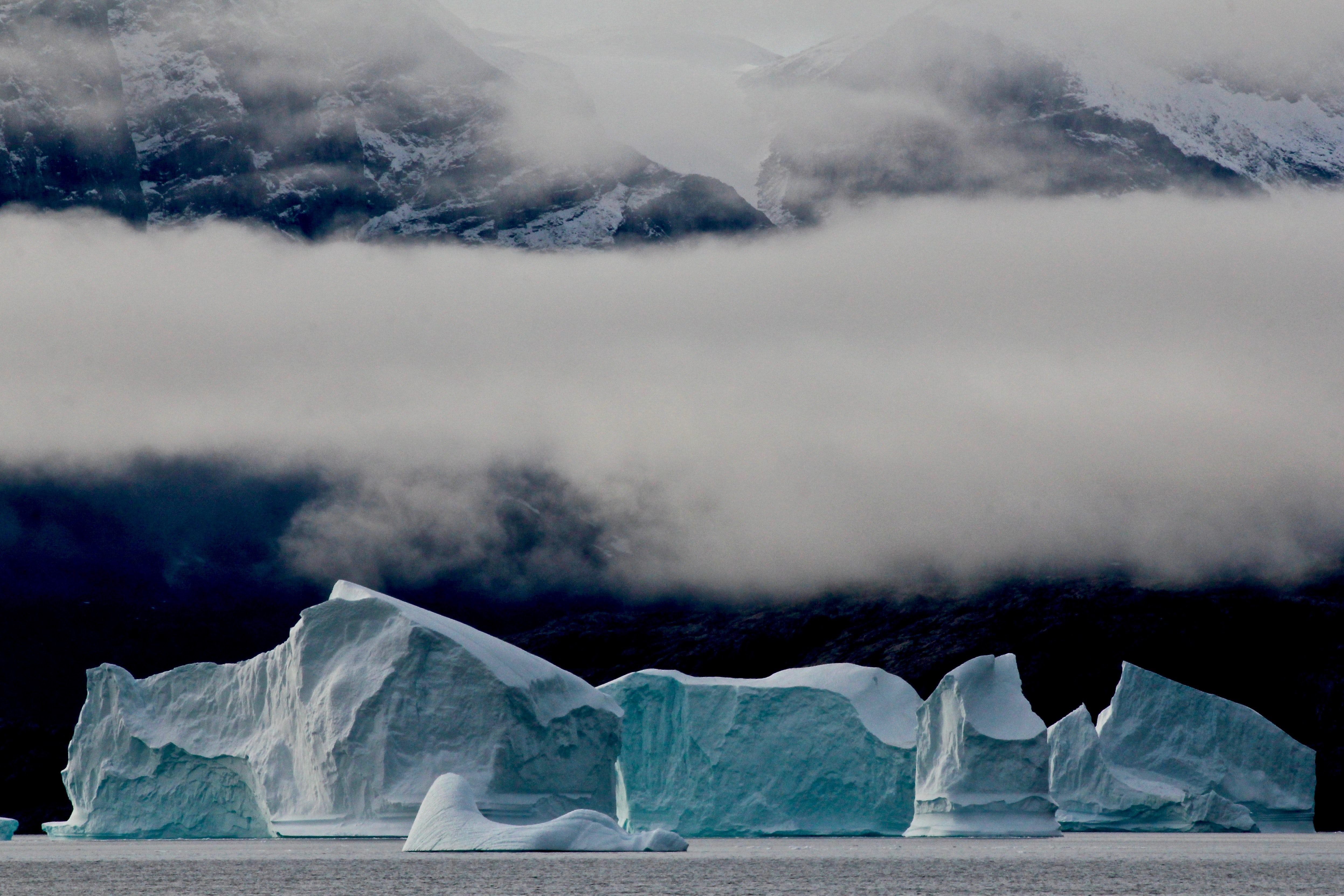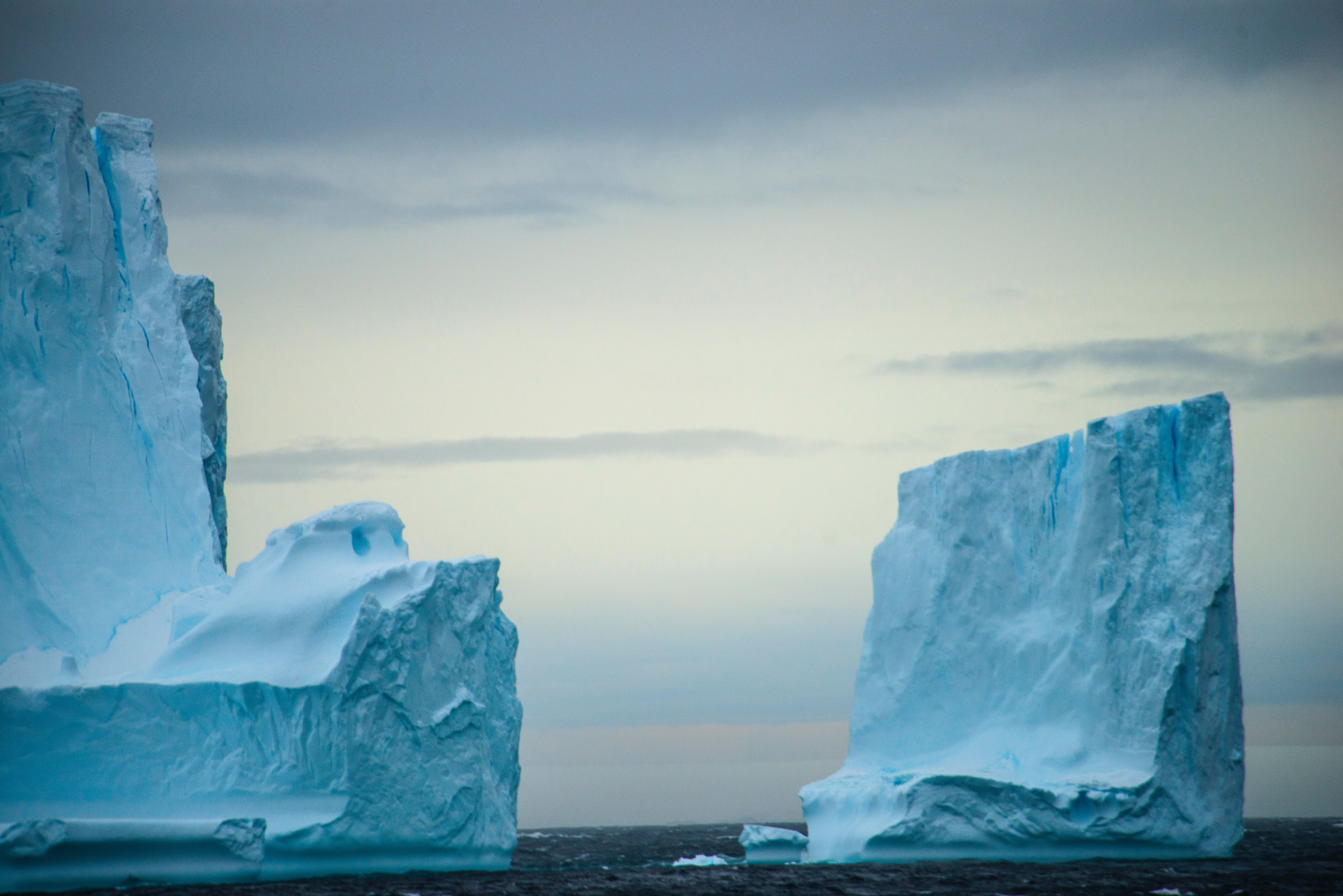Research has revealed a connection between the melting of the glaciers in the Arctic Circle and those in Antarctica * A similar feedback but in the opposite direction (of increasing ice) took place at the beginning of ice ages
By Racheli Vox, Angle - a news agency for science and the environment

These days, many eyes are on a glacier called A68a, which broke off from the Antarctic continent in 2017 andApproaching in recent times with giant strides To South Georgia, an island under British rule located east of the southern tip of the American continent. If the iceberg collides with the island, it could endanger you the animals that live in it, among them penguins, elephant seals, albatrosses and rare birds that live only in this area, but recently significant cracks were observed in it and it is possible that because of this the collision will be avoided.
New and groundbreaking research He discovered a surprising factor that could accelerate the melting of the glaciers in Antarctica: the condition of the glaciers on the other side of the world - in the North Pole and the way in which these distant glaciers "communicate" with each other.
The new study, published in the prestigious scientific journal Nature, was conducted by an international team of researchers, which included among others scientists from Harvard University, and examined the changes in the state of the glaciers in the North and South Poles in the last 40 years.
The researchers examined rocks that were previously trapped in the Antarctic ice (Southern Hemisphere), that were carried from the continent to the ocean by glaciers that broke away from it and that were released into the sea water when the thaw occurred, and checked when and where each such rock broke away from the continental ice sheet. In addition, they built an integrated XNUMXD computer model of the continental ice sheets and sea level, and combined the information that emerged from it with data from multi-layered soil samples collected on the ocean floor near Antarctica. The researchers also examined signs that indicate where the coastlines were in the past and how their locations have changed.
The researchers discovered that despite the great distance, the glaciers at the two opposite poles interact with each other: about 26-20 years ago, when the Earth was at the peak of the last ice age, the northern hemisphere was covered with a lot of ice, which even reached northern Europe and the North American continent. And that its formation from ocean water also led to a significant drop in sea level. According to the findings of the study, this drop in level caused the amount of glaciers to increase significantly on the continent of Antarctica as well.
According to the study, when the Earth began to emerge from the Ice Age and the global climate became warmer, the opposite process occurred: the ice in the Northern Hemisphere began to melt and the sea level in the region rose, which led to a rise in the level also near Antarctica and a significant melting of glaciers in the region as a result of the more extensive contact of glaciers with The warming sea water. In fact, the Antarctic ice sheet has shrunk to its current extent in only thousands of years - a short period of time in geological terms. It should be noted that until the new study, the reason for the rapid melting of the Antarctic ice at the end of the last ice age was a mystery.
Communication through water currents
"The continental ice sheets at the poles can affect each other even though the distances between them are enormous, because of the water that flows between them," says Dr. Natalia Gomez from the Department of Earth and Planetary Sciences at McGill University, who led the research. "The glaciers actually 'talk' to each other through the changes in sea level."
According to Prof. Yoav Yair, dean of the School of Sustainability at the Interdisciplinary Center in Herzliya, an important mediating factor in the influence of the poles on each other through seawater is the thermo-haline conveyor belt (water temperature and salinity): the passage of huge currents of warm and cold water throughout the various oceans and between them. "If the Northern Hemisphere experiences any change, the effect can be transmitted within a few months via the thermoheline conveyor belt to the South, and vice versa," he says.
The thermohellenic conveyor belt has a very significant effect on the state of the world's oceans and climate even today. As part of this process, for example, water from warm areas near the equator naturally flows to the polar regions, where it cools and sinks to the bottom of the ocean, and flows in the depths back towards the equator. Thus, ocean currents transport heat to great distances: the Gulf Stream, for example, which leaves the Gulf of Mexico and reaches the east coast of the United States and from there to northwestern Europe, is the reason why these areas are significantly warmer than other areas located at the same latitudes (such as Russia and Canada).
The point of no return must not be reached
The new research dealt with the melting of glaciers that occurred many years ago, but can one pole affect the state of the ice in the pole opposite to it also within the framework of the melting of glaciers that is occurring today? Yair fears so. "The conditions today are completely different, because the reason for the thaw is the climate crisis and because it is happening at the same time in both poles, even though its pace is faster in the North Pole and especially in Greenland, but I am afraid that it might happen," he says. "If this happens, it may accelerate the process beyond the rate at which each pole would thaw alone."
The global melting of glaciers is currently affecting Antarctica, the continental ice in Greenland and the glaciers on the mountain tops around the world. This phenomenon, which is expressed among other things in the increase in the rate at which glaciers breaking off the Antarctic ice shelf and drifting to the sea, is the main reason why the global sea level has risen bClose to 25 centimeters In the last 150 years - of which nine centimeters in the last 25 years alone. The ice shelves serve as a kind of "stop".” to the land ice that is slowly moving towards the sea. When the ice shelves break and break off at a faster rate, the ability of the 'stop' to stop the land ice decreases and the land ice can move faster to the sea and raise the sea level in the oceans at a faster rate. According to the reports of the Panel of Climate Scientists of the United Nations (IPCC), the estimates are that the sea level is expected to rise by the end of this century by 74-30 centimeters (depending on the emissions scenario that will be realized). in other studies from recent years A sharp and faster rise of up to three meters is also expected.

The effects of sea level rise can already be seen today in various island countries around the world, such as Micronesia in the Pacific Ocean, where the area of some of the islands has already shrunk significantly and some of them have even begun disappear completely from the map. The rise in sea level has caused many residents in Bangladesh to lose their homes, and has also begun to affect parts of the US coastline: the city of Miami in Florida, for example, is struggling with flooding caused by it and especially during tropical storms whose frequency and intensity are increasing. The phenomenon will not pass over Israel either, and the level of the Mediterranean Sea on the country's coasts is also expected to rise in a meter to 1.4 meters until the end of this century.
"There are models that predict that around the year 2300 the Earth will be a planet without ice," says Yair. "A world like this is different in every way. But we are not there yet." As mentioned, even a much less significant compromise, such as the one that has already begun to take place, is expected to cause very significant damage. "In my opinion, we have not yet passed the point of no return of the climate crisis, but we must act very quickly so that we do not reach it," concludes Yair.
More of the topic in Hayadan:
